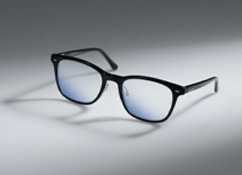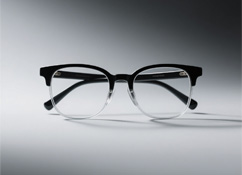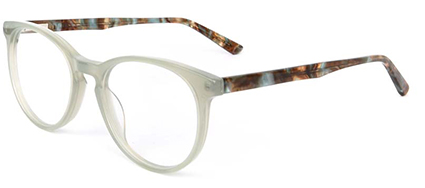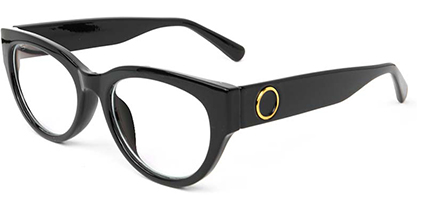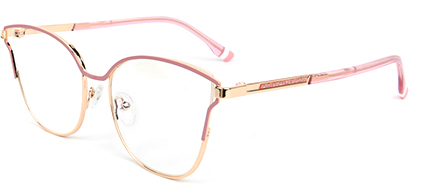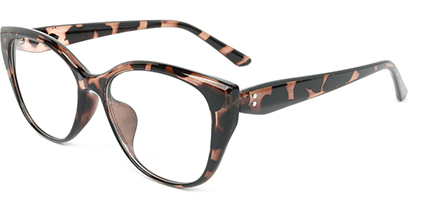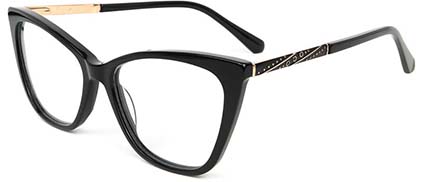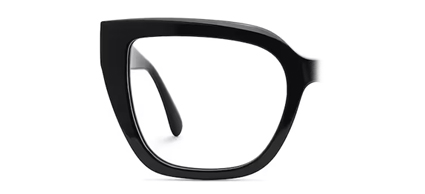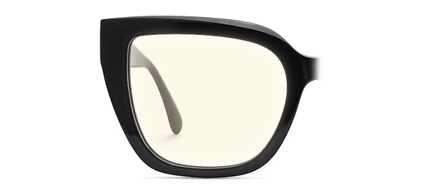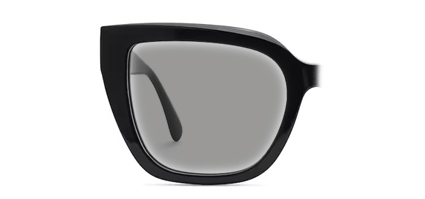Choosing the right glasses can be overwhelming, but understanding frame materials, lens types, and refractive indexes will help you make the best decision for your vision and lifestyle.
1. Frame Materials: Comfort & Durability
-
1. Acetate (Plant-Based Plastic)
Features:
- Made from cotton fibers and bio-based plastic
- Lightweight with high-gloss finish
- Made from cotton fibers and bio-based plastic
Benefits:
- Hypoallergenic (no skin irritation)
- Retains shape better than regular plastic
- Eco-friendly (plant-based materials)
Best for: Fashion lovers, allergy sufferers, and those wanting bold styles.
-
2. Plastic (Standard)
Features:
- Made from molded acrylic or nylon
- Often thicker/chunkier than acetate
- Matte or glossy finishes
Benefits:
- Budget-friendly
- Lightweight
- Simple, classic look
Best for: Kids, backup glasses, or low-maintenance wearers.
-
3. Metal (Stainless Steel/Alloy)
Features:
- Sleek, thin profile
- Often adjustable nose pads
- Corrosion-resistant options
Benefits:
- Ultra-durable (lasts years)
- Lightweight
- Minimalist and professional look
Best for: Professionals, metal allergy-free wearers, and fans of slim frames.
-
4. TR90 (Thermoplastic Rubber)
Features:
- Flexible, memory material
- Often paired with metal hinges
- Matte finish
Benefits:
- Nearly unbreakable
- Super lightweight (lighter than acetate)
- Sweat- and heat-resistant
Best for: Athletes, kids, and active lifestyles.
-
5. Mixed(Acetate + Metal / TR90 + Metal)
Features:
- Combines two materials (e.g., acetate front + metal arms)
- Offers both style and function
Benefits:
- Best of both worlds (durability + aesthetics)
- More secure fit than pure plastic
- Versatile designs
Best for: Those who want balance—stylish yet sturdy frames.
2. Lens Types: Clarity & Protection
-
1. Clear Lenses
Features: Basic lenses for everyday vision correction.
Benefits:
- Affordable and great for general use.
- High light transmission for natural vision.
Best for: Those who don’t need special lens coatings.
-
2. Blue Light Filtering Lenses
Features: Blocks harmful blue light from screens (phones, computers, TVs).
Benefits:
- Reduces eye strain, dryness, and sleep disruption.
- Helps prevent long-term digital eye fatigue.
Best for: Office workers, students, and heavy screen users.
-
3. Photochromic Lenses
Features: Automatically darken in sunlight and clear up indoors.
Benefits:
- Acts as both prescription glasses and sunglasses.
- 100% UV protection.
Best for: People who frequently move between indoor and outdoor settings.
3. Lens Index: Thinner & Lighter Lenses
The refractive index measures how much light bends as it passes through the lens. A higher index means a thinner, lighter lens—especially important for stronger prescriptions.
- Refractive Index
- Best For
- Thickness
- Price
- 1.56 index
- Low prescriptions
- Up to 15% thinner than 1.5 index lenses
- $
- 1.60 index
- Mild to moderate prescriptions
- Up to 20% thinner than 1.5 index lenses
- $$
- 1.67 index
- Moderate to strong prescriptions
- Up to 30% thinner than 1.5 index lenses
- $$$
- 1.71 index
- Strong prescriptions
- Up to 35% thinner than 1.5 index lenses
- $$$$
- 1.74 index
- Very strong prescriptions
- Up to 40% thinner than 1.5 index lenses
- $$$$$
Which one should you pick?
- Low prescription (e.g., +/- 2.00 or less)? → 1.56 or 1.60 (saves money without excess thickness).
- Moderate prescription (e.g., +/- 3.00 to +/- 4.00)? → 1.67 (thinner and lighter).
- Strong prescription (e.g., +/- 5.00 to +/- 6.00)? → 1.71 (even sleeker).
- Very strong prescription (e.g., +/- 6.00+)? → 1.74 (thinnest and most comfortable).




